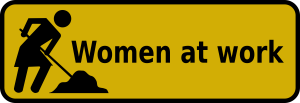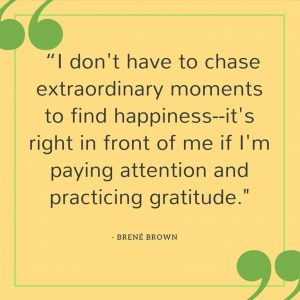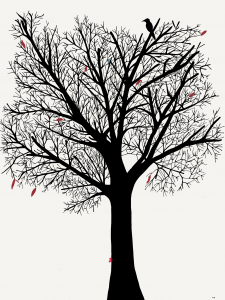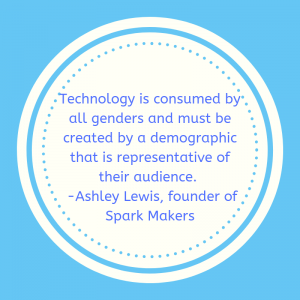
The Canadian Charter of Rights and Freedoms outlines what gender equity should look like … but do women really have gender equity in 2018?
In education and workplace participation, gender equity has made some strides.
- in 2015, women are almost as likely to have a high school (82.5% women vs. 89.3% men) or university degree (83.1% women vs. 89.9% men)
- in 2015, 77.5% of women were employed compared to 85.3% of men, up from 21.6% in 1950 and 65.2% in 1983
- in 2015, women are more likely to be away from work (30.0% women vs. 23.9% men) and more likely to be away for a full week of work (38.4% women vs. 24.8% men)
- in 2015, women are more likely to work part-time (18.9% women vs. 5.5% men)
- in 2015, women are more likely to do volunteer work (67.2% women vs. 53.0% men)
- In 1976 – men had higher levels of employment based on the marital status
- 1976 men – 78.0 % employed single/never married, 92.7% employed married/common-law, and 82.3% employed separated/divorced/widowed
- In 2015 – women employment rates of women no longer differ based on marital status
- 1976 women – 79.4% employed single/never married, 44.6% employed married/common-law, and 59.2% employed separated/divorced/widowed
Nevertheless, challenges remain:
Too few women are advancing into leadership roles.
- Women make up just 21.6% of Financial Post 500* board member (2016)
Women are under-represented in politics in 2015.
- 26% of those elected to the 42nd Parliament are women
- women made up 28% of municipal councillors and only 18% of mayors
Women continue to be responsible for the majority of care giving and household unpaid work.
- women vs. men still spend (25.7 hrs/week) more time caring for their children (in 2010 women 50.1 vs. 24.4 hours/week on unpaid child care)
- women vs. men are twice as likely to spend more than 10 hours per week unpaid work caring for seniors (49% women vs. 25% men)
- women vs. men spend 5.5 hours more on housework (13.8 hrs women vs. 8.3 hrs men per week)
Women in the workforce tend to earn less than men.
- women earn $0.876 for every dollar men earn, largely as a result of inequity between women and men within occupations (2015)
Women continue to experience high rates of gender-based violence.
- Women have a 20% higher risk of violent victimization than men (2015)
- Women account for 87% of victims of sexual offences and 76% of victims of criminal harassment (2015)
Some groups are at particular risk for gender-based violence.
- 10% of aboriginal women were about three times as likely to report being a victim of spousal violence as 3% of non-Aboriginal women (2015)
How does this impact ETFO members?
As 82% of elementary teachers identify as women, women’s issues directly impact elementary teachers.
- With too few women (21.6%) in leadership roles, women’s voices are not heard.
- With under-representation of women in politics, women’s needs and equality are not addressed.
- With more women spending their time, away from work, on unpaid work (caring for children and seniors, housework, volunteer work) , this unpaid work is not valued.
- With women taking more time off work than men, this means women pay for higher sick leaves and long term leaves (on a personal note, when my children were young, I used 15 days of vacation days, before teaching, to take care of sick children and had no vacation that year). Again, women’s time at work is not valued as much as men’s time at work – if it was, more men would be taking time off to deal with family responsibilities.
Further, our ETFO colleagues are 20% more likely to be victims of violence than men and 87% of victims of sexual violence. Our aboriginal ETFO colleagues are 3 times more likely to be victims of spousal violence.
Fortunately, female and male ETFO members are paid equitably based on experience and qualifications.
How do we change this?
- Advocate for women leaders and leadership
- Advocate for men to take on more caregiving and household responsibilities
- Advocate for better, more inexpensive and supplemented childcare
- Start small by changing attitudes and behaviours of women’s paid and unpaid work
- Challenge gender stereotypes and subtle sexism encountered every day
- Challenge sexism and discrimination that allow gender inequality to exist
- Go for leadership roles and run for office
How can you change this on a personal level?
- Expect men to take as much responsibility as women to care for children and seniors
- Expect men to take parental leave so women to go back to work
- Expect men to take as much responsibility as women for household chores
- Hire house cleaners to clean your house, even if they clean part of the house
- Advocate for better, more affordable/supplemented childcare, where the childcare workers are fairly paid
In Canada, gender equity is exists but it’s not completely equal. Let’s hope women can make similar strides in improving stats in leadership, unpaid work, and gender violence that have happened in education and employment. Let’s hope in the next 10 years, the stats noted above will look more equal, more equitable, and less biased towards women.
Happy International Womens’ Day 2018
Collaboratively Yours,
Deb Weston
Interesting Resources:
http://interactive.unwomen.org/multimedia/timeline/womenunite/en/index.html#/1840
http://www.unwomen.org/en/digital-library/multimedia/2018/2/infographic-rural-women
http://interactive.unwomen.org/multimedia/infographic/changingworldofwork/en/index.html
http://www.un.org/en/women/endviolence/
https://kids.britannica.com/kids/article/International-Womens-Day/602161
https://www.teachstarter.com/blog/free-international-womens-day-resources-activities/
https://www.internationalwomensday.com/School-Resources
http://www.caaws.ca/gender-equity-101/what-is-gender-equity/
Sources:
*The Financial Post’s ranking of Canada’s largest companies by revenue.
all data from Stats Canada
http://www.swc-cfc.gc.ca/commemoration/iwd-jif/equality-egalite-en.html
http://www.statcan.gc.ca/pub/89-503-x/2015001/article/14694-eng.htm
http://www.statcan.gc.ca/daily-quotidien/170308/dq170308b-eng.htm
Weston, DPA, 2015. Downloaded from http://hdl.handle.net/10464/6191


 For me as a kid, there was no better feeling than opening up a new box of 64 Crayola crayons. The big box with the flip top lid and the sharpener on the side. I can remember agonizing over which colour to pick first and being so thrilled by the perfection of the colour palette in neat rows in that box. I loved to draw and colour. I could do it for hours never lifting my attention from the page. In adulthood, I abandoned doing art for pleasure. It seemed silly for me to sit around and draw or paint for no real reason. I felt I should be doing something productive. A few years ago I began to create art again and realized how much I had missed it and how much joy it brought to my life. I create digital art now, which isn’t quite the same rush as opening a box of crayons but it is easier to share with others-like the picture above. I have recently learned about the health and wellness benefits of creating. Creating is rejuvenating, it is rest and it is soul food.
For me as a kid, there was no better feeling than opening up a new box of 64 Crayola crayons. The big box with the flip top lid and the sharpener on the side. I can remember agonizing over which colour to pick first and being so thrilled by the perfection of the colour palette in neat rows in that box. I loved to draw and colour. I could do it for hours never lifting my attention from the page. In adulthood, I abandoned doing art for pleasure. It seemed silly for me to sit around and draw or paint for no real reason. I felt I should be doing something productive. A few years ago I began to create art again and realized how much I had missed it and how much joy it brought to my life. I create digital art now, which isn’t quite the same rush as opening a box of crayons but it is easier to share with others-like the picture above. I have recently learned about the health and wellness benefits of creating. Creating is rejuvenating, it is rest and it is soul food.

